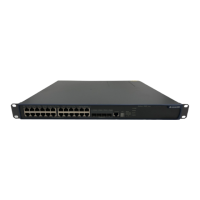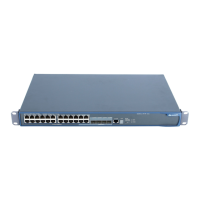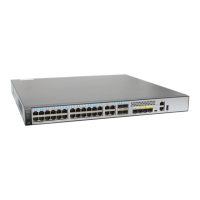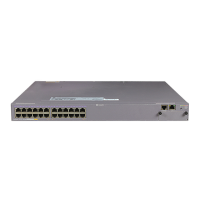Operation Manual – Multicast Protocol
Quidway S5600 Series Ethernet Switches-Release 1510 Chapter 7 PIM Configuration
Huawei Technologies Proprietary
7-2
7.1.2 Work Mechanism of PIM-DM
The working procedure of PIM-DM is summarized as follows:
z Neighbor discovery
z SPT establishing
z Graft
z RPF check
z Assert mechanism
I. Neighbor discovery
In PIM-DM network, the multicast router needs to use Hello messages to perform
neighbor discovery and maintain the neighbor relation when it is started. All routers
keep in touch with each other through sending Hello messages periodically, and thus
SPT is established and maintained.
II. SPT establishment
The procedure of establishing SPT is also called Flooding&Prune.
The procedure is as follows:
z PIM-DM assumes that all hosts on the network are ready to receive multicast
data.
z When a multicast router receives a multicast packet from a multicast source "S"
to a multicast group "G", it begins with RPF check according to the unicast routing
table.
z If the RPF check passes, the router will create an entry(S, G) and forward the
packet to all the downstream PIM-DM nodes. That is the process of flooding.
z If not, that is, the router considers that the multicast packets travel into the router
through incorrect interfaces, the router just discards the packets.
After this process, the router will create a (S, G) entry for every host in PIM-DM domain.
If there is no multicast group member in the downstream nodes, the router will send a
prune message to the upstream nodes to inform them not to forward data any more.
The upstream nodes, as informed, will remove the relative interface from the outgoing
interface list corresponding to the multicast forwarding entry (S, G). The pruning
process continues until there are only necessary branches in PIM-DM. In this way, a
SPT (Shortest Path Tree) rooted at source S is established.
The pruning process is initiated by leaf routers. As shown in
Figure 7-1, the routers
without receivers (such as the router connected to User A) initiates the pruning process
automatically.

